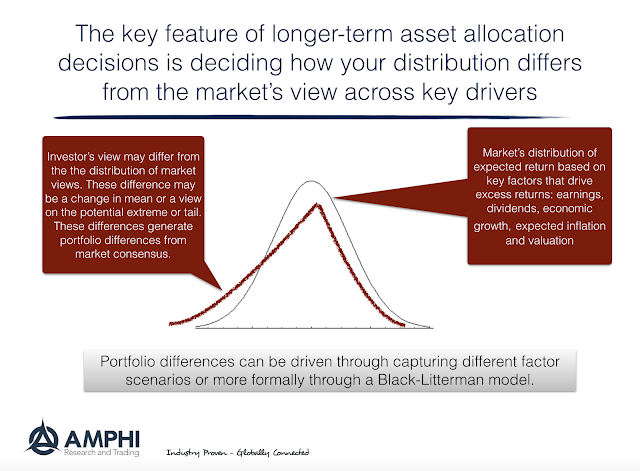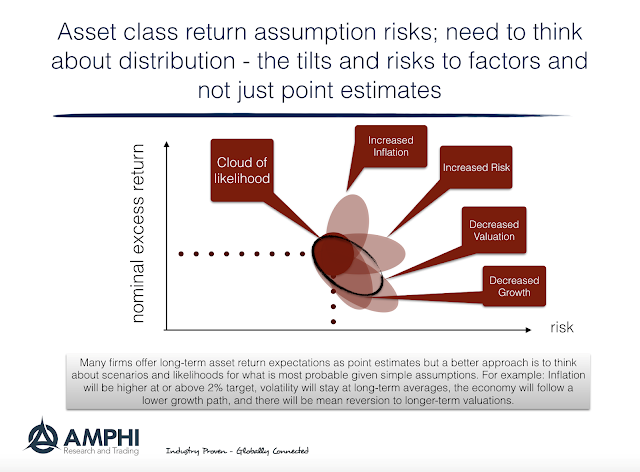The reason for asset allocation scenario analysis is simple. There is a whole crowd of investors who do use or are uncomfortable with formal decision-making employing optimization. Quantitative asset allocation models like Black-Litterman, while elegant in theory, have not caught-on with many who are on the frontline of asset allocation work. Running scenario analysis provides a useful thought experiments tool to help refine asset allocation choices.
Many large Wall Street sell-side and buy-side firms will provide long-term excess return forecasts for clients. These will usually be a combination of a number of simple factors like growth, inflation, valuation, earnings and dividend yield. These factors are rolled-up to a point estimate for the long-term expectation that can be used to help with long-term asset allocation decisions.
There are ways to extract more value from these forecasts through using scenarios analysis with confidence assessments on the component factors to generate alternative asset allocations. Scenario analysis provides a quick way to assess alternatives.
An asset allocator can compare his underlying factor expectations and confidence against the market’s estimates and form alternative allocation choices for different scenarios. Factor inputs for your long-term expectations can be given different weights or level of confidence than the market view. These differences in estimates for the underlying factors can then be incorporated into different asset allocations which can be given some likelihood.
Running comparisons of your own subjective market forecasts against the market’s view is not novel, but it can be an extremely useful exercise for identifying risks and reasons for portfolio tilts.
For example,
- What would be your bond return expectations if long-term inflation were greater than the market consensus of 2%?
- How much confidence do you have in a greater than 2% inflation forecast?
- If you believe there will be a higher inflation number, what would be the portfolio you would create relative to a current benchmark?
- Do you believe current stock valuations will continue? If stock valuations normalize, what will do you believe will be the impact on expected equity returns?
How will you adjust your portfolios relative to a benchmark or the market consensus for valuation?
Scenario analysis can show the impact on asset return and risk from your subjective views versus the market’s view. If this is done on a factors basis with confidence weights, investors can generate the overall impact of their views on potential return and risk.
We have found that there is an effective middle ground between optimization and ad hoc use of point estimates for asset allocation decisions. Albeit a second best solution, scenario analysis, if done right with some measure of likelihood with respect to alternatives can be a useful informative tool for investors.


